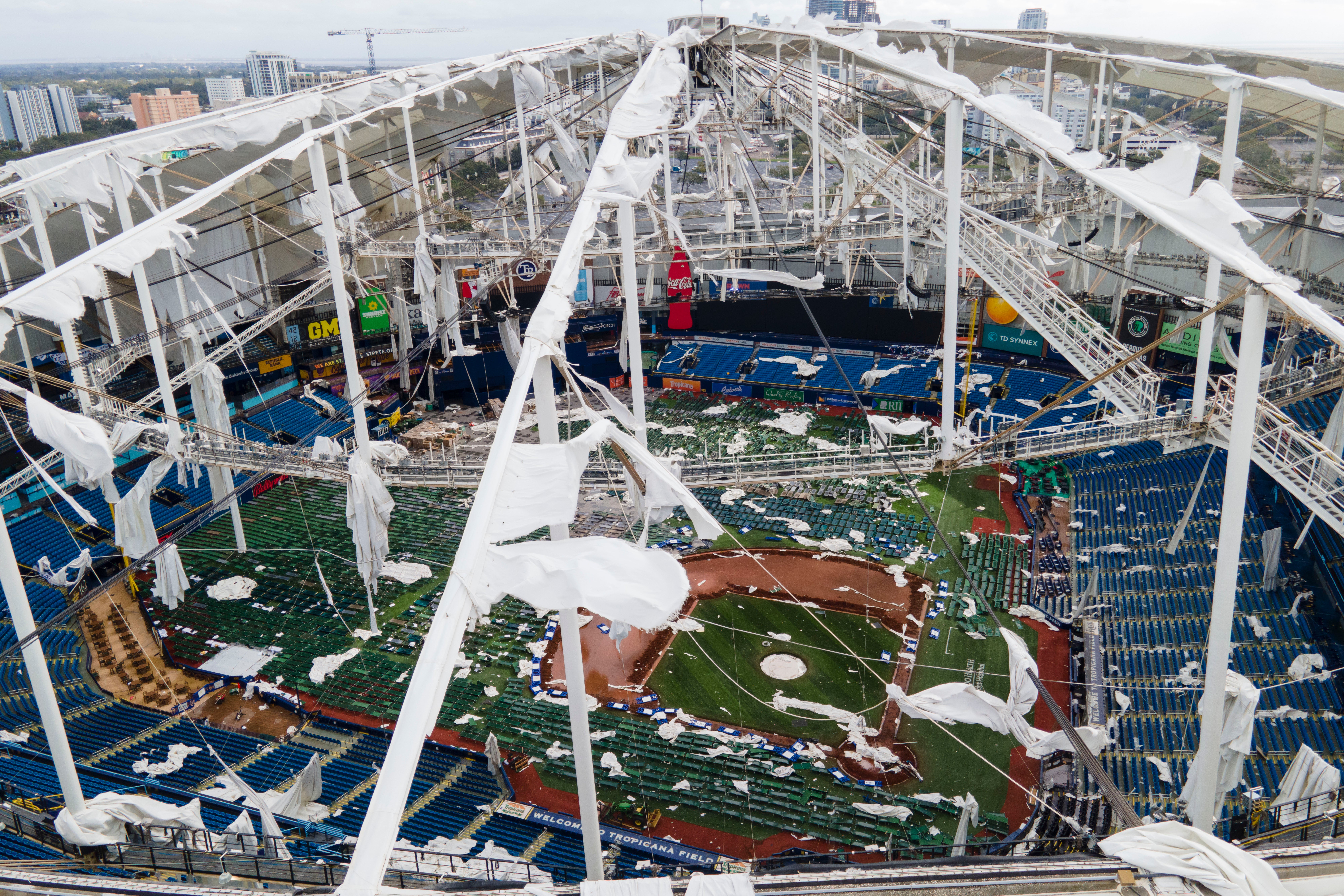Hurricane-damaged Tropicana Field can be fixed for about $55M in time for 2026 season, per report
A detailed assessment of the hurricane damage to Tropicana Field concludes that the home of the Tampa Bay Rays is structurally sound and can be repaired for about $55.7 million in time for the 2026 season

A detailed assessment of the hurricane damage to Tropicana Field concludes that the home of the Tampa Bay Rays is structurally sound and can be repaired for about $55.7 million in time for the 2026 season.
The 412-page report released Tuesday by the City of St. Petersburg, which owns the building, found that the basic structure of the domed stadium “does not appear to have been adversely affected” by Hurricane Milton's winds, which shredded most of its fabric roof.
“The primary structure is serviceable and capable of supporting a replacement tension membrane fabric roof,” said the report by Hennessy Construction Services.
Eighteen of the ballpark's 24 fabric panels failed when Milton roared ashore Oct. 9, the report found. There was also damage to interior parts of the Trop, as it's known for short, from rainwater and other storm-related causes. The ballpark opened in 1990 and has been the Rays' home since their inception in 1998.
Tropicana Field is already scheduled to be demolished when a new, $1.3 billion ballpark is finished in time for the 2028 season. With unforeseen costs to the city and Pinellas County from two hurricanes — vast amounts of debris removal, damage to parks and infrastructure — two of the main financial sources for the new ballpark could reconsider those plans or decide not to repair the Trop at all.
The St. Petersburg City Council will discuss the report at its Nov. 21 meeting.
“We have so much need across the city,” said council member Brandi Gabbard at a meeting last week. “I love the Rays. I love Tropicana Field. It’s not about not wanting to do this. It’s about a balance of priorities.”
The council recently approved $6.5 million to clean up the ballpark and protect it from any further damage, including waterproofing areas such as the press box, seating areas and scoreboard.
The city does have an insurance claim for the damage and repairs, but it includes a $22 million deductible and probably would only cover part of the overall costs. That means taxpayer dollars would have to be used.
The Rays did not immediately respond Tuesday to a request for comment. Since the ballpark under this damage and repair assessment would not be ready until the 2026 season, the Rays must find another place to play next year.
Major League Baseball wants the Rays to remain in the area near their fanbase if at all possible, with several Tampa Bay-area spring training sites suggested. These include ballparks in Clearwater (Phillies), Tampa (Yankees), Dunedin (Blue Jays), Sarasota (Orioles), Lakeland (Tigers) and the Rays' own spring training home in Port Charlotte. Most of these locations host minor league teams during summer.
The planned new Rays ballpark is part of a $6.5 billion project that will include affordable housing, a Black history museum, retail and office space, restaurants and bars. The project is known as the Historic Gas Plant District, which was once a thriving Black community displaced by construction of the ballpark and an interstate highway.
___
AP MLB: https://apnews.com/MLB
Bookmark popover
Removed from bookmarks